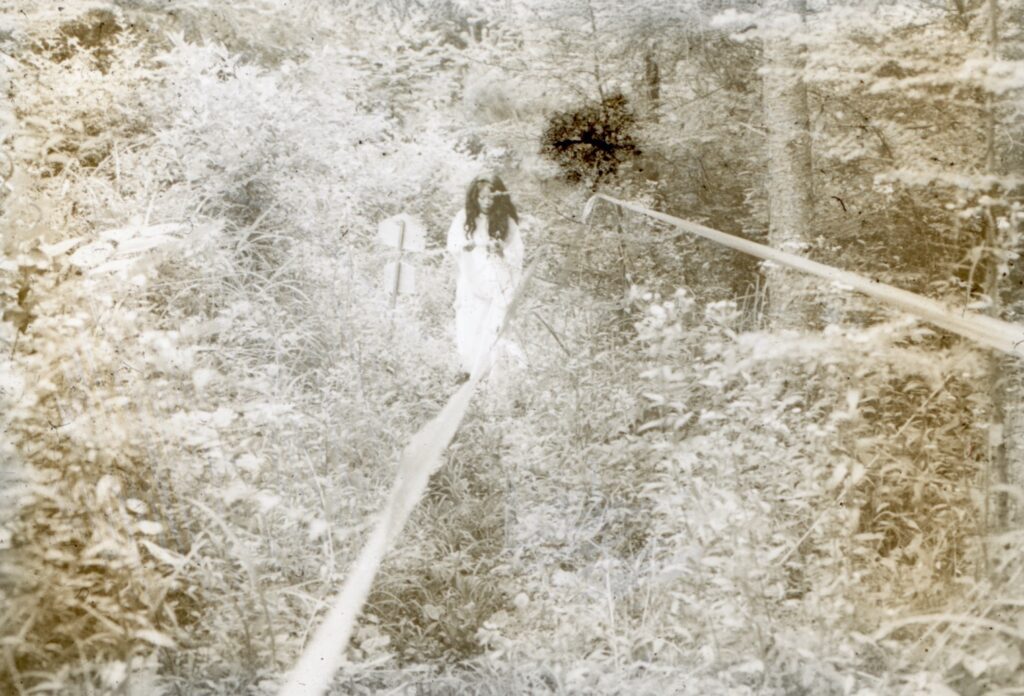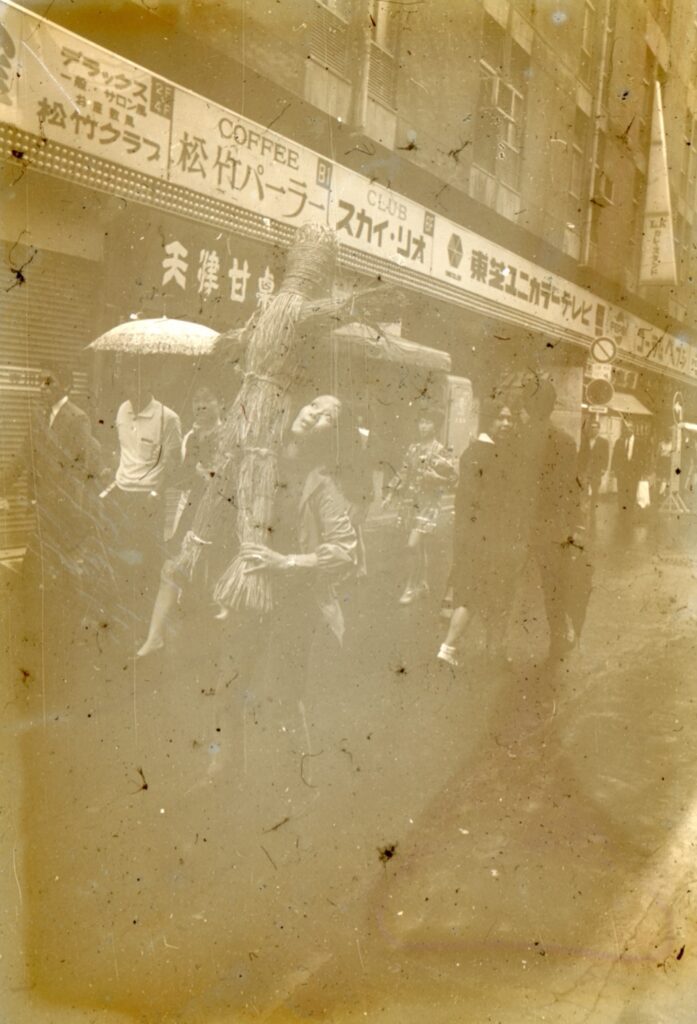– a three part interview series about HEIRLOOM’s new events/exhibitions entitled Unfiled
While summer was at its highest in Copenhagen, I went to see the exhibition Disappearing Body – Becoming Tsujimura curated by bluestocking (bs), which consist of Karen Andersen and Helen Nishijo Andersen. The exhibition was hosted by HEIRLOOM and part of their new series of events/ exhibitions entitled Unfiled.
Disappearing Body – Becoming Tsujimura was an exhibition that investigated the archive material surrounding the Japanese performance artist Kazuko Tsujimura. She was a part of Japan´s post-war avant-garde and introduced the concept ”dance without body, without dance”. Tsujimura´s work has been largely overlooked, and this is the first time that archival material is presented to the public, which happens in collaboration with artist and researcher Yoshiko Shimada and in collaboration with the two Copenhagen based artists Aase Nielsen and Body_hacker.
As I moved through the exhibition it was clear that it was a true tribute, made with intense interest and deep care. The archive material was rich and open to interpretation, as there was very little information as to what Tsujimura´s own thinking had been in creating her performances. It felt generous to be able to engage with an archive that was open to interpretation and furthermore was interpretated by two contemporary artists.
I was lucky to be able to interview both Yoshiko Shimada, Aase Nielsen as well as Body_hacker regarding their research and practice in relation to Tsujimura. This is the first interview out of three.
I began with speaking with Shimada, an artist and researcher, who has gathered the archive material. Shimada´s own practice as an artist mirrors the work she has done in relation to Tsujimura – seeing achieving as feminist act of care.

An attempt to revolt against the objectification of the female body
Karin Hald [KH]: You have a diverse practice, you are an artist, activist and researcher. Here, in the context of Disappearing Body – Becoming Tsujimura, I want to start by asking you about how you have worked as a researcher regarding the 10 boxes of material left for Makoto Tsujimura (her brother) after the death of Tsujimura. How did you dive into this important oeuvre of an art practice without being able to speak to the artist herself?
Yoshiko Shimada [YS]: I started researching alternative art schools in 2010 with another artist/researcher Alice Moude-Roxby, which included Ex-skole in Copenhagen, Bigakko in Tokyo and University of Iowa. I did the part of Bigakko. It was later made into an exhibition and a catalogue.
Yutaka Matsuzawa, a Japanese conceptual artist who was teaching at Bigakko, and I started going to his house in Suwa, Nagano prefecture. It is over 200 years old, and nobody was living there for over 10 years when I visited, to look into various materials. I found materials of the Nirvana group like the ON-e event and mail art.
Tsujimura was a part of this group, so I already knew of her. On-e was a “sound meeting” – a kind of performance festival which took place one night in July 1971, in the mountains of Suwa. Over 30 people gathered at the meditation platform built by Yutaka Matsuzawa, and each artist performed in the darkness of the night. There was no audience. They performed in and for the nature surrounding them.
I was interested in Tsujimura because she was one of the rare female conceptual artists in Japan, but at that time, there were only a few photos and some letters.
Then I got to know her brother, Makoto, through various events I organized in Suwa about Matsuzawa, such as a group tour to On-e site.
He then told me about his sister and the existence of 10 boxes he kept in a storage of his friend’s atelier.
We brought them to my studio in Chiba and went through them with Makoto, who has been to most of the events and took some photographs.
I also got to know Taro Hanaga, a son of Mitsutoshi Hanaga who took some of the photos of Tsujimura’s performance. I also got Hanaga’s writings on Tsujimura.
After going through the materials (her writings, diary, dance connotations, photos etc.), I talked to some of the surviving Nirvana group artists and Rui Sekido, another member of PPB dance group.
There are no moving images of Tsujimura’s performances, but I gathered writings and oral history about her. Now most of those artists passed away, so it was fortunate that I got to talk to them in time.

KH: What do you find most striking about Tsujimura´s practice and how do you think it relates to the present moment, regarding performance, spirituality and identity?
YS: I was most impressed by her 1969 performance in darkness – in which she became invisible except for the recessed parts of her body. In the late 1960s performing arts, “body” was the main issue. Tatsumi Hijikata, the founder of Butoh dance, performed Revolt of the Body in 1968, and the avant-garde theatre director, Juro Kara wrote Theory of the privileged body in 1967. Both advocated reinstatement of the real “body”, not the narrative or technicality in the theatre arts. Tsujimura’s “disappearance of body” was total opposition to them.
It made me think of how “body” has been genderized. Both Hijikata and Kara are male. While they insist on the “body”, what they envisioned was a male body. The female body was already everywhere as an object to be seen. Tsujimura made a living as a nude model and a show dancer. She possessed a beautiful body. Since she was very young, she was always a centre of male gaze. Perhaps this performance was her attempt to revolt against the objectification of the female body.

Another point is her insistence of “dance without dance”. There was no choreography in this performance. She stood and slowly lay down, but her later notes show that she was practicing yoga and instructed her students to take one pose as long as they could. Those poses look easy and static, but keeping them takes a lot of energy, strength and concentration. Under Matsuzawa’s influence, she was interested in esoteric Buddhism and ultimate Nirvana (nothingness). To reach there, one needs to go through hard ascetic training. I wonder if “dance without dance” was a form of such spiritual training for her?
Her deep thoughts of body, gender, and search for spiritual space seem to be of interest among the younger generation of artists. Both Aase and Body_hacker are drawn to Tsujimura’s quiet resistance against materiality.
